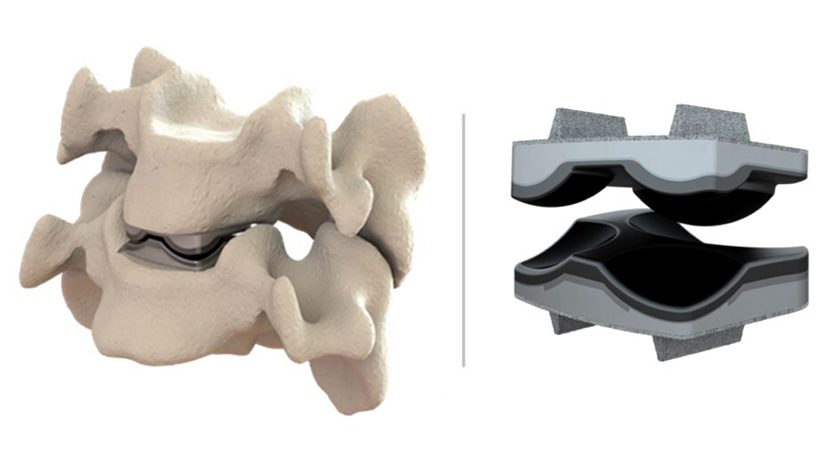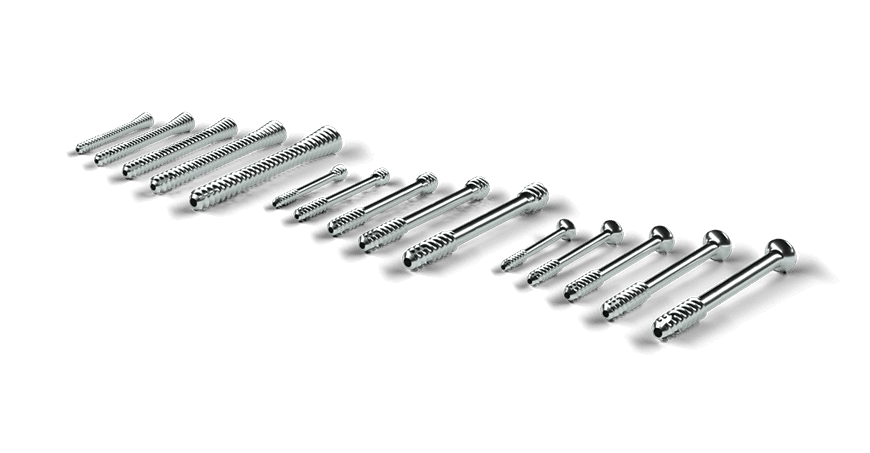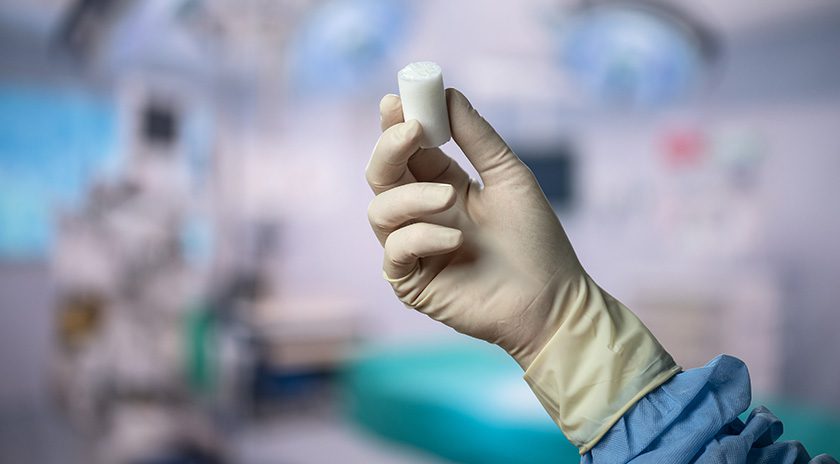

 Copy to clipboard
Copy to clipboard 
Funding an orthopedic company is difficult, especially as large investors have prioritized later-stage firms that have derisked their products. Still, orthopedics specifically and medical devices in general are attractive markets from a return-on-investment perspective, said Greg Banker, Partner at Vensana Capital.
“There’s a tremendous opportunity to improve outcomes for patients and physicians,” Mr. Banker said. “There are exciting innovations being enabled by data and AI, and novel engineering and manufacturing. We definitely need more med device entrepreneurs.”
Vensana’s previous investments have included Cartiva (acquired by Wright Medical), Artelon (acquired by Stryker), and Relievant Medsystems (acquired by Boston Scientific). The venture capital firm typically invests $25-$30 million in an individual company, but will start at $10 million if it thinks the company can build a position over time.
Mr. Banker shared advice on what questions investors would like to hear answered when a company pitches them. While his advice might sound basic, it’s based on the mistakes he’s seen startups repeatedly make.
What’s the Value of Your Product?
Companies need to define and quantify the clinical unmet problem they’re trying to solve for patients. “Ask yourself: Am I providing a value proposition? How significant is the problem you’re trying to solve? How frequently does your product apply to the problem?” Mr. Banker said.
Companies often fall into a trap of believing they’ve made a truly novel device when it’s just new engineering applied to a problem that other companies have solved. Mr. Banker noted that a lot of medtech innovation comes out of academic settings. In those cases, it’s important to get smart product development teams with clinical experience around the table to make sure the device isn’t overengineered and works as intended.
Further, what’s the market opportunity for your device? Mr. Banker said that companies need to be realistic and objective about the size of the problem they’re trying to solve. Investors want to know how many patients can be treated with the device and the price the device can achieve with each procedure.
You might be chasing a large market, but how much of it can you access? “We see about 600 companies every year, and every company says they have a billion-dollar market opportunity,” Mr. Banker said. “In actuality, there are probably only 15 to 20 medical device categories that produce a billion dollars in the U.S. market.”
How Are You Addressing All Stakeholders?
The path to market requires meeting the needs of numerous backers, including manufacturing partners, FDA, CMS, commercial payers, physicians, hospitals and patients. A pitfall for early-stage companies is that they focus too much on one player, usually FDA, Mr. Banker said.
“Ideally, you have a plan that addresses each of these stakeholders,” Mr. Banker said. “The challenge, of course, is that every stakeholder seeks something different. We often see companies design a trial or clinical evidence package based solely on FDA feedback, and then they need to redo work to meet the needs of the physician.”
Mr. Banker advised that companies start by contacting FDA to get a clear understanding of the regulatory path for their device, but that doesn’t negate the need to look ahead and properly plan to appease payers and end users.
How Is Your Intellectual Property (IP) Protected?
It’s one thing to design a device; it’s another to protect your innovation through patents and trademarks. “Do you have the freedom to operate without infringing on somebody else’s design? Can you actually protect the innovation that you’re trying to commercialize? What’s the novel feature that’s unique to your device?” Mr. Banker said.
Securing IP is expensive but important to consider early in the design phase. Hiring a team that specializes in drafting, negotiating and even litigating orthopedic device IP will ensure that your company has a solid understanding of the landscape in which you seek to play.
Two mistakes Mr. Banker sees companies make are engaging with contract manufacturers to do prototyping and publishing papers about their device before taking the proper IP steps. “You really want the IP team involved as early as possible,” he said. “IP is hard to do retrospectively.”
What Is Your Path to Exit?
Investors seek a return on the capital they lend, thus startups must show their plan for selling the company. Mr. Banker said an inability to show a clear path to exit rules out the majority of investments from his firm.
He recommends that startups work backward from a sale to understand their options. Ask questions like: Can you take the company public or build a standalone business? How many established companies would consider acquiring your portfolio? How many companies play in your sales channel?
Mr. Banker said startups might identify three or four potential buyers, but when they investigate the strategics’ portfolio gaps and merger and acquisition strategies, the number often decreases to one or two.
“If a potential acquirer has an existing product that competes with yours, is it realistic that they are going to acquire a product they already have, even if your device is a little bit better?” Mr. Banker said. “The new product could capitalize on a strategics’ existing products and volumes. They have to believe that the new product will result in significant market share.”
Companies also need to consider how much capital they need to raise before exit. Orthopedic startups must secure tens of millions to hundreds of millions of dollars, depending on how novel their device is and the value collection points required to clear regulatory and reimbursement hurdles.
“Startups need to consider at what point in the business’s life they’ll be taken out,” Mr. Banker said. “That will contribute to the potential for ROI.”
While the medical device industry does not have as robust a funding environment as industries like pharma or tech, there are many venture capital firms interested in the space, Mr. Banker said. His advice for orthopedic companies that seek funding is to conduct research upfront and understand and meet the needs of stakeholders across the device’s lifecycle to build a solid foundation that is attractive to investors and acquirers.
“It’s an exciting time to be in the medtech ecosystem,” Mr. Banker said. “We need more entrepreneurs to continue to push and develop innovations. I think it’s an attractive investing category from an ROI perspective.”
Funding an orthopedic company is difficult, especially as large investors have prioritized later-stage firms that have derisked their products. Still, orthopedics specifically and medical devices in general are attractive markets from a return-on-investment perspective, said Greg Banker, Partner at Vensana Capital.
“There’s a...
Funding an orthopedic company is difficult, especially as large investors have prioritized later-stage firms that have derisked their products. Still, orthopedics specifically and medical devices in general are attractive markets from a return-on-investment perspective, said Greg Banker, Partner at Vensana Capital.
“There’s a tremendous opportunity to improve outcomes for patients and physicians,” Mr. Banker said. “There are exciting innovations being enabled by data and AI, and novel engineering and manufacturing. We definitely need more med device entrepreneurs.”
Vensana’s previous investments have included Cartiva (acquired by Wright Medical), Artelon (acquired by Stryker), and Relievant Medsystems (acquired by Boston Scientific). The venture capital firm typically invests $25-$30 million in an individual company, but will start at $10 million if it thinks the company can build a position over time.
Mr. Banker shared advice on what questions investors would like to hear answered when a company pitches them. While his advice might sound basic, it’s based on the mistakes he’s seen startups repeatedly make.
What’s the Value of Your Product?
Companies need to define and quantify the clinical unmet problem they’re trying to solve for patients. “Ask yourself: Am I providing a value proposition? How significant is the problem you’re trying to solve? How frequently does your product apply to the problem?” Mr. Banker said.
Companies often fall into a trap of believing they’ve made a truly novel device when it’s just new engineering applied to a problem that other companies have solved. Mr. Banker noted that a lot of medtech innovation comes out of academic settings. In those cases, it’s important to get smart product development teams with clinical experience around the table to make sure the device isn’t overengineered and works as intended.
Further, what’s the market opportunity for your device? Mr. Banker said that companies need to be realistic and objective about the size of the problem they’re trying to solve. Investors want to know how many patients can be treated with the device and the price the device can achieve with each procedure.
You might be chasing a large market, but how much of it can you access? “We see about 600 companies every year, and every company says they have a billion-dollar market opportunity,” Mr. Banker said. “In actuality, there are probably only 15 to 20 medical device categories that produce a billion dollars in the U.S. market.”
How Are You Addressing All Stakeholders?
The path to market requires meeting the needs of numerous backers, including manufacturing partners, FDA, CMS, commercial payers, physicians, hospitals and patients. A pitfall for early-stage companies is that they focus too much on one player, usually FDA, Mr. Banker said.
“Ideally, you have a plan that addresses each of these stakeholders,” Mr. Banker said. “The challenge, of course, is that every stakeholder seeks something different. We often see companies design a trial or clinical evidence package based solely on FDA feedback, and then they need to redo work to meet the needs of the physician.”
Mr. Banker advised that companies start by contacting FDA to get a clear understanding of the regulatory path for their device, but that doesn’t negate the need to look ahead and properly plan to appease payers and end users.
How Is Your Intellectual Property (IP) Protected?
It’s one thing to design a device; it’s another to protect your innovation through patents and trademarks. “Do you have the freedom to operate without infringing on somebody else’s design? Can you actually protect the innovation that you’re trying to commercialize? What’s the novel feature that’s unique to your device?” Mr. Banker said.
Securing IP is expensive but important to consider early in the design phase. Hiring a team that specializes in drafting, negotiating and even litigating orthopedic device IP will ensure that your company has a solid understanding of the landscape in which you seek to play.
Two mistakes Mr. Banker sees companies make are engaging with contract manufacturers to do prototyping and publishing papers about their device before taking the proper IP steps. “You really want the IP team involved as early as possible,” he said. “IP is hard to do retrospectively.”
What Is Your Path to Exit?
Investors seek a return on the capital they lend, thus startups must show their plan for selling the company. Mr. Banker said an inability to show a clear path to exit rules out the majority of investments from his firm.
He recommends that startups work backward from a sale to understand their options. Ask questions like: Can you take the company public or build a standalone business? How many established companies would consider acquiring your portfolio? How many companies play in your sales channel?
Mr. Banker said startups might identify three or four potential buyers, but when they investigate the strategics’ portfolio gaps and merger and acquisition strategies, the number often decreases to one or two.
“If a potential acquirer has an existing product that competes with yours, is it realistic that they are going to acquire a product they already have, even if your device is a little bit better?” Mr. Banker said. “The new product could capitalize on a strategics’ existing products and volumes. They have to believe that the new product will result in significant market share.”
Companies also need to consider how much capital they need to raise before exit. Orthopedic startups must secure tens of millions to hundreds of millions of dollars, depending on how novel their device is and the value collection points required to clear regulatory and reimbursement hurdles.
“Startups need to consider at what point in the business’s life they’ll be taken out,” Mr. Banker said. “That will contribute to the potential for ROI.”
While the medical device industry does not have as robust a funding environment as industries like pharma or tech, there are many venture capital firms interested in the space, Mr. Banker said. His advice for orthopedic companies that seek funding is to conduct research upfront and understand and meet the needs of stakeholders across the device’s lifecycle to build a solid foundation that is attractive to investors and acquirers.
“It’s an exciting time to be in the medtech ecosystem,” Mr. Banker said. “We need more entrepreneurs to continue to push and develop innovations. I think it’s an attractive investing category from an ROI perspective.”

You’ve reached your limit.
We’re glad you’re finding value in our content — and we’d love for you to keep going.
Subscribe now for unlimited access to orthopedic business intelligence.
CL
Carolyn LaWell is ORTHOWORLD's Chief Content Officer. She joined ORTHOWORLD in 2012 to oversee its editorial and industry education. She previously served in editor roles at B2B magazines and newspapers.






